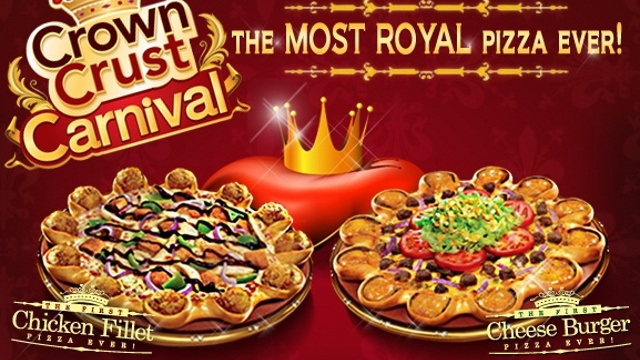
What makes something go viral? The Internet according to Gawker’s Neetzan Zimmerman
In March, I wrote about Gawker’s new quantity-over-quality experiment. Each day, one Gawker staffer was tasked with pageview-chasing duty, a quest to post enough cat videos, Miley Cyrus pics, and local news ephemera to keep the clicks coming en masse. That staffer’s work would free up others to work on longer, more involved pieces. Pageview duty rotated, because — who could stare too long into the Internet’s bright raw id and not go blind?
Neetzan Zimmerman, apparently. Editor A.J. Daulerio hired him two months ago to focus exclusively on viral content. Zimmerman’s title at Gawker is Editor, The Internet. He is assigned to cover the Internet.
This machine-like person has generated more than 300 bylines for Gawker since he started on April 9. These are not lengthy tomes, usually; nearly every post is just a funny photo or video, with body text barely longer than a caption. The average word count of a sampling of his recent stories is about 200.
Zimmerman sits comfortably atop Gawker’s leaderboard, garnering two to five times more pageviews than his highest-performing colleagues. Zimmerman is so prolific, his posts so magnetic, that Daulerio has now relieved all 10 full-time Gawker staffers of their pageview chores.
“A taxidermied cat being that’s been turned into a helicopter — that’s clearly going to be successful, right?”
“He’s a total freak, a specialist, if you will, and I’d much rather have him (one person!) taking care of the backend of Gawker and letting the rest of us grow the site a little more traditionally,” Daulerio told me in an email. “He’s doing an outstanding job so far, now it’s a task for us to keep up and build more around him every day.”
The reaction from readers to my previous story was split between “Journalism is doomed!” and “Journalism is saved!” A lot of people interpret Daulerio’s motives as trying to figure out how to maximize pageviews. That’s true, but I think the essential question is, more precisely: Can Chinese goats subsidize substance? Canfarting babies pay the bills, so journalists can focus on real work?
Consider the reach of Zimmerman’s recent work (approximate pageviews parenthetical):
- This Pizza Has a Crust Made Out of Cheeseburgers (41,000)
- Husband Leaves Wife Because Her 550 Cats Kept Stealing His Food (32,000)
- Crappy Teacher Tells Kindergartner Who Pooped Her Pants To Sit On It(32,000)
- How Did a Scarf-Wearing Pig End Up on a Highway Outside Pittsburgh?(30,000)
- Dead And Buried Hamster Emerges From Grave Alive And Well And Hungry For Brains (27,000)
- A Friendly Reminder: Don’t Put Your Explosive Portable Meth Lab Down Your Pants (13,000)
Zimmerman, 30, was previously the one-man operation called The Daily What, a Tumblr site he created in 2008 while bored at work. He’s the guy who elevatedDouble Dream Hands to meme status and Rebecca Black to global fame. (It is so documented in Know Your Meme, the paper of record for the Internet.)
The Daily What was scooped up by Ben Huh’s Cheezburger Network in 2010. In April of this year, Zimmerman parted ways with Cheezburger to get a little break from the relentless schedule and maybe pursue some more serious work. He was pumping out about 35 posts a day at The Daily What and never took a weekend off. At Gawker, he tells me, he averages 13-14 posts a day. “The least I’ve ever done was 9, and that was on an excruciatingly slow day,” he said. Weekends are mostly free now.
What makes something go viral?
Last week Zimmerman posted This Is How You Make Something Go Viral: An Impractical Guide, an essay five times the length of his usual work. I devoured it, expecting to finally learn the secret of virality. I came away unsatisfied. It seemed more like a guide to discovering — dare I say, curating — viral content, a complex system of early-warning signs that seems to make sense only in Zimmerman’s head.
He describes an Internet food chain, a series of tiers of websites that disseminate viral content. The highest-performing, most visible websites — BuzzFeed, Boing Boing, Gawker, Reddit — often graze on content discovered by lower-visibility sites. The lower-tier sites are often the ones to lift TV news bloopers or funny Facebook photos from obscurity. But they depend on their mainstream predators/enablers to elevate something to meme status. Zimmerman described his system thus:
In order to stay as current as possible, I make sure to run a spot-check of the most visible sites at least once a week. Refreshing the index with the most fruitful lower tier content sources is only half of it: Losing the dead weight is crucial as well. My rule is simple: If a site hasn’t produced at least on[e] item of value during the week, it drops down a tier. If it bottoms out and still hasn’t proven useful, it’s gone.
“In nature,” Zimmerman told me, “you can’t really say the fly or the mosquito are not as important as the animals that eat them, because they still provide sustenance for those animals…It’s the same thing with these lower-tier sites — they’re sometimes even more important.”
As in any competitive ecosystem, there are days when sustenance is scarce. On slow news days, Zimmerman wrote: “Insipid, pointless, patently unintesting and unfunny items are brought to the fore when they would otherwise remain unmissed in obscurity.”
I pressed Zimmerman to reveal precisely what it is that makes something viral. News organizations, marketers, and C-list bloggers could really use this. He talks about this vague quality called “Internet bent.”
“When I talk about Internet bent, it’s sort of, what’s viral, versus just what’s making headlines? Those tend to be two different things. When something goes viral, it tends to be something that is not expected to go viral,” he said. So when the U.S. kills al-Qaida’s No. 2 man in a drone attack, that’s a big headline, but it’s not bound to be viral content.
“A taxidermied cat being that’s been turned into a helicopter — that’s clearly going to be successful, right? Because it’s got that element of shock, it’s got that element of a cat, you know, it’s basically just tailored to the Internet,” he said. I am laughing at this point.
A Neetzan for news?
This would seem to disappoint people in news organizations who want to learn from the masters and grow their traffic. Not only is viral content so unpredictable, it tends to not really be news content. So instead of creating viral content, maybe news organizations should be aggregating viral content. Maybe every news organization needs a Neetzan Zimmerman.
But how does a Washington Post or St. Louis Post-Dispatch create its own Daily What and not look ridiculous?
“My approach to this whole thing from the start, it was…take everything that’s going on on the Internet seriously. Treat it as you would something that you might read in The Economist,” he said. “If you read Tumblr, for instance, there’s some smart people out there…They’re not dumbing down the content, but they’re still introducing it in a way that they know will be palatable to this new audience.”
As an example he points to GIF HOUND, a Tumblr site that presents the day’s news in the form of animated GIFs. Take this image that condenses a four-minuteObama campaign video about Mitt Romney’s Massachusetts jobs record:
That image reached a lot of people who might not otherwise watch the video. Maybe it compelled viewers to click through and watch the whole thing.
And then this happened:
When’s the last time someone with 16 million Twitter followers shared your content?
A.J. Daulerio, the Gawker editor, has said more than once that he does not like pageview-chasing — but, in essence, You got a better idea for paying for journalism? As he wrote last week:
I hate cats in hot tubs, cats sitting on babies, Keyboard Cats playing off babies who suck at singing, etc. Looking at them is fine. I mostly hate that, at some point, a viral video becomes the default hit-switch for a slow news day. But when your job is to grow a site’s traffic, it’s tough to ignore — and for the sake of the other writers, it’s a necessary cog.
Even if Neetzan Zimmerman could save journalism, his defect is that he’s human. Human beings wear out. Human beings want to try new things, branch out. I asked him, could he be automated? Could we turn Zimmerman into A MACHINE? He laughed and said math was his weakest subject in school. “You could probably find a way to do that.” You could write a program that checks the high-performing sites for stories and cross-checks them against other sites, dynamically ranking aggregators and awarding more points to those whose content goes viral more often.
But you can’t replicate his gut, not yet. There are no hard-and-fast rules, he said. Zimmerman’s many stories cohere somehow. They have wit and soul in a way I can’t quite describe. Robots can’t do that.
Zimmerman is skeptical that mainstream newsrooms will learn from Gawker. “They want to keep the integrity of the old guard in place, and they’re very concerned that any sort of shift from that would be seen as trying to pander,” he said. “That is something that’s going to end up with them going out of business.”
And he does not say that dismissively. Zimmerman grew up in Israel reading two national newspapers every day, cover to cover. He does not want traditional news organizations to disappear, he said, but they have to start catering to their nextaudience now.










